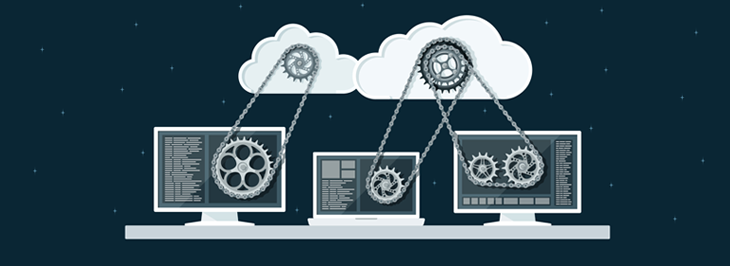For companies of all sizes and industries, cloud automation is unlocking untold billions of dollars in business value. 75 percent of IT executives using cloud automation report that their organization's revenue, agility, and customer experience have improved as a result.
With the benefits of cloud automation so clear, you might be wondering how to implement it for yourself. This article will discuss what you need to know to get started with cloud automation.
What is cloud automation?
The term "cloud automation" refers to software-based solutions that automatically control the installation, configuration, and management of cloud computing services. In short, cloud automation is about using technology to make better business decisions for your cloud computing resources at the right times.
Orchestrating all of the modules in a cloud computing environment can be a complex and challenging task: installing and deploying virtual machines, servers, storage clusters, and virtual networks. What's more, you have to manage and monitor these resources after deploying them to make sure they perform up to your expectations.
For many organizations, their cloud computing resources are simply too complicated for humans to control and manage in real time. As businesses continue to move more and more of their operations into the cloud, the role of cloud automation will become increasingly important. The ultimate goal of cloud automation is to make the task of cloud management as quick and efficient as possible.
Cloud automation is made up of a variety of IT activities, including:
- Backups and storage
- Security and compliance
- Code deployment
- Changes to settings and configurations
The benefits of cloud automation
Lower costs
Automating your cloud infrastructure reduces the amount of human touch that's required to manage it. When you implement cloud automation, you'll have fewer manual errors, and your IT staff can focus on high-level strategic business activities rather than putting out fires from day to day.
Related: 4 public cloud trends to watch for
Faster deployment
Companies such as Netflix have used cloud automation to push out hundreds of changes to their website each day. Netflix's cloud monitoring tools can automatically detect problems and revert changes if the site's performance begins to suffer. Being able to roll out new code at any time is an essential part of "continuous delivery," a software engineering philosophy in which all changes are thoroughly tested to make sure they're production-ready.
Better control
By standardizing your cloud management strategies, cloud automation technologies ultimately give you more power and influence over your IT resources. Cloud automation allows you to define your business processes and policies so you can more easily modify them when your needs change. Having this degree of predictability is particularly important if your organization is subject to audits and industry regulations.
Achieving DevOps
"DevOps" is a highly popular set of practices that aim for greater unity and collaboration between software developers and IT operations teams within an organization. The benefits of DevOps include faster time to delivery, more stable environments, and more satisfied and productive team members. As the cloud becomes increasingly significant for DevOps, investing in cloud automation helps organizations have better IT governance while using fewer resources.
Want to learn more? Check out the top 4 benefits of a managed cloud service provider.




